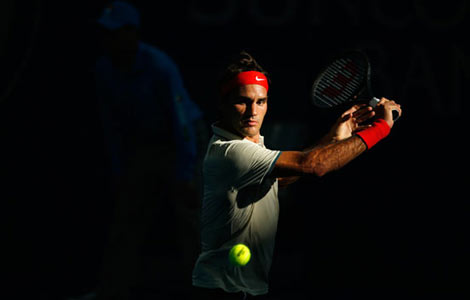Military experts laud China's new Z-20 helicopter
Updated: 2014-01-03 02:00
By Zhao Lei (China Daily)
|
||||||||
China is making giant strides toward becoming a strong helicopter power, military experts said.
The comments came in the wake of media reports that the nation's first Chinese-made medium-lift utility helicopter has made its maiden flight.
"The Z-20 is supposed to fill a long-time void in the helicopter fleet of the People's Liberation Army. Hopefully, it will fulfill the requirements of the PLA's ground force and navy," Wang Ya'nan, deputy editor-in-chief at Aerospace Knowledge magazine, said on Thursday.
"Though we now have the advanced WZ-10 and WZ-19 attack helicopters in the army, the absence of a suitable, Chinese-made utility helicopter hampers the army's ability to transport strike forces and carry out support missions."
The situation will change if the Z-20 enters into service soon, he said.
The Z-20 designation has not been officially confirmed, but it is widely used by military enthusiasts and observers.
A prototype of the Z-20 conducted its maiden flight on an unidentified airfield in Northeast China on Dec 23, Chinese media quoted aviation sources as reporting.
The helicopter has a takeoff weight of 10 metric tons and is able to fly at high altitudes, the reports said.
Fang Bing, a military expert from PLA National Defense University, said China has long been troubled by the lack of its own midsize helicopter, and all of the helicopters previously developed by China are either too heavy or too light to serve as tactical utility helicopters.
The backbone of the PLA ground force's air transport team is believed to be Russian-made Mil Mi-17s, purchased from Russia in the 1990s and a variation of the Mil Mi-8, which was imported by China in the 1970s. China also bought 24 Sikorsky S-70 series medium-lift helicopters from the United States in the 1980s and assigned them to transportation tasks in high-altitude, mountainous regions of the Tibet and Xinjiang Uygur autonomous regions.
"Judging from information available now, the Z-20 will mainly be used as a transport vehicle, but because it is designed to be capable of serving multiple purposes, it can be refitted to conduct attack, early-warning, refueling or anti-submarine missions," Chen Hong, a researcher at the PLA Air Force Command Institute in Beijing, told Beijing News.
"Although the aircraft's appearance bears some resemblances to the US' Sikorsky UH-60 Black Hawk, it doesn't necessarily mean the Z-20 is merely a knockoff of its US counterpart," he said. The Z-20 has a five-blade rotor compared with the UH-60's four blades, he added.
"The addition of a blade will enable the Z-20 to outperform the UH-60 when it comes to lift force, ferry range and payload capacity," he said.
The Z-20 also has a larger cabin and a different landing gear and tail than the UH-60, Chen added.
Wang speculated that the helicopter can carry about 1.5 tons of cargo internally and up to 5 tons of cargo externally in a sling, enabling China to launch low-altitude, airborne assaults by task forces.
He also said the helicopter's designers used several cutting-edge technologies on the helicopter to reduce its noise, thus improving the stealth capability.
The Z-20 will be able to be deployed aboard any air-capable frigate, destroyer, amphibious assault ship or aircraft carrier and handle patrol, reconnaissance, rescue, supply and anti-submarine missions, he said.
China has seen remarkable achievements by its aviation planners and designers in the helicopter field since 2009, when delivery of the domestically developed WZ-10 attack helicopter to the military began.
Two years later, the WZ-19, a light-duty reconnaissance and attack helicopter, was put into service.
Designers are also working on the development of next-generation helicopters that can achieve a speed of 500 km per hour, said Lin Zuoming, chairman of Aviation Industry Corp of China.

 India successfully launches heavy lift rocket
India successfully launches heavy lift rocket
 Xuelong waits for chance to break free
Xuelong waits for chance to break free
 Fewer candidates take graduate entrance test
Fewer candidates take graduate entrance test
 Frigate escorts transport of Syria chemical weapons
Frigate escorts transport of Syria chemical weapons
 Putin, Belarussian president play ice hockey
Putin, Belarussian president play ice hockey
 Federer, Hewitt to meet in Brisbane final
Federer, Hewitt to meet in Brisbane final
 Culture that counts
Culture that counts
 Kerry says progress in Mideast diplomacy
Kerry says progress in Mideast diplomacy
Most Viewed
Editor's Picks

|

|

|

|

|

|
Today's Top News
Small plane crashes in Colorado
NYC Chinatown weathers killer storm
Program helps ex-inmates find work
'Life-threatening' cold bites US Midwest
Backing out of China to reshore
China keeps Africa as a key pillar
Major corruption cases up in 2013
New grads look abroad for first jobs
US Weekly

|

|







